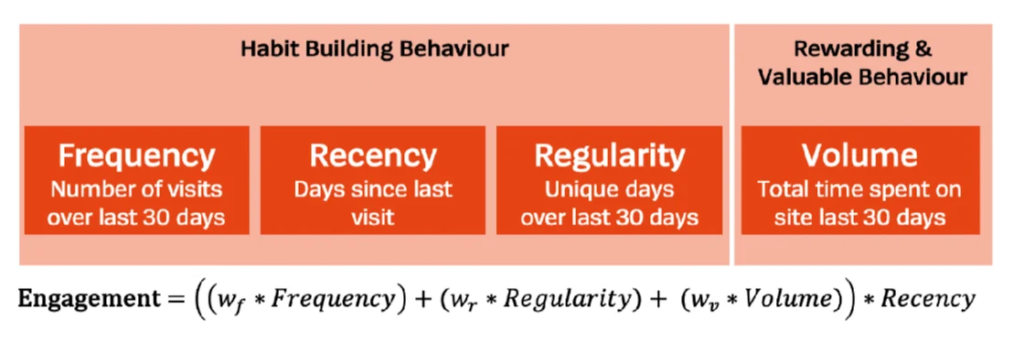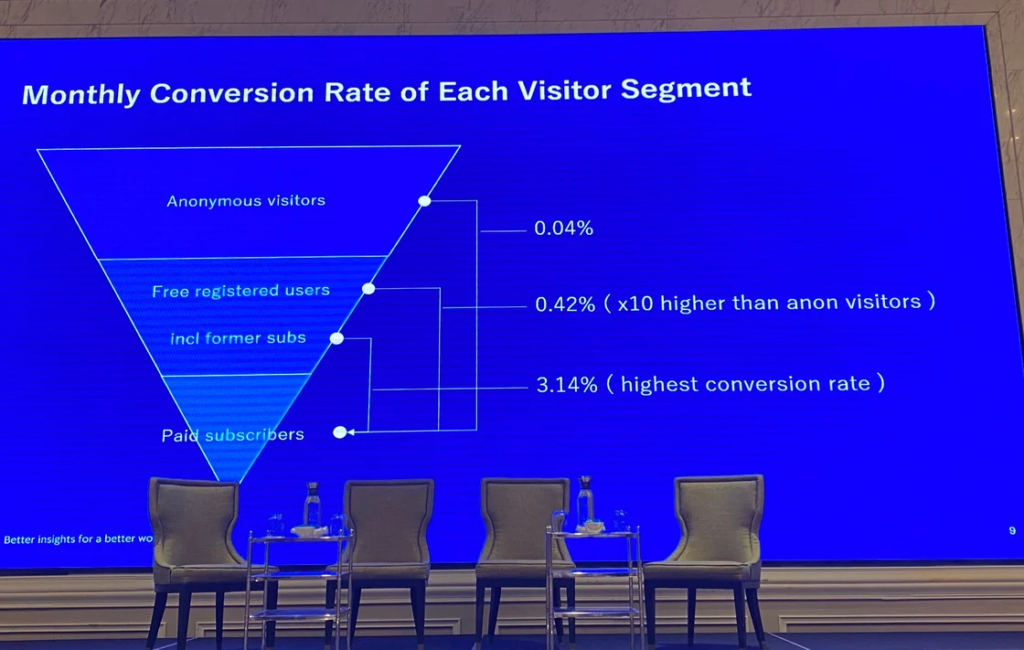

You're reading The Audiencers' newsletter #25, sent out on November 1st, 2023. To receive future newsletters straight to your inbox every two weeks, sign up here.
Learning from niche publishers
Something I’ve had on my mind this week… Niche publishers constantly perform at the top of benchmark averages (as proven by Poool’s Conversion Reports), with an often smaller but highly engaged audience who are more likely to pay for premium products.
And whilst not every publisher covers just a single, niche topic, there are other ways to ‘be niche’ and benefit from the same high levels of engagement:
- Content written by a single editor: their unique voice and personality builds a relationship with readers that they can’t get elsewhere
- Dynamic conversion models: using audience segmentation and triggers via a UTM_Source you can target messaging and conversion journeys to the reader’s interests, making them feel like you’re a niche publisher focused on this topic

- Thematic newsletters: we all know the value of newsletters for engagement, but with a very specific, niche topic focus their value can be even more evident. Have you heard of pop-up newsletters for example?
- Communities, events & WhatsApp groups: with a specific topic, these have proven to increase retention rates, loyalty and create two-way communication channels with readers, also helping you to get direct consumer feedback
Anyway, onto today’s newsletter:
- How we measure audience engagement at DER SPIEGEL
- How many articles should you give for free before the paywall?
- Takeaways from WAN-IFRA’s Digital Media Asia
- Content to add to your reading list
How we measure audience engagement at DER SPIEGEL
Contributor piece by Alexander Held, data Scientist at DER SPIEGEL
“By focusing on delivering a meaningful and relevant experience to our readers, DER SPIEGEL has built a loyal and engaged community of subscribers who actively seek out our brand and value the content we provide.
We are successful in acquiring new subscribers, yet we are facing a significant challenge in maintaining the retention of these readers. Some of our subscribers stop engaging with our content, leading to churn.
This article dives into how we measure audience engagement and its impact on key business metrics.”

“While the traditional RFV factors have long been the standard for measuring user engagement, DER SPIEGEL has charted a distinctive course by introducing a novel element into the equation: Regularity.”

With this engagement score in place, DER SPIEGEL can align engagement with business metrics to understand the actions that should be prioritized in favor of high LTV.
“One crucial aspect of this alignment is recognizing the impact of low engagement on user retention. When users exhibit low levels of engagement, it raises a red flag. It’s a warning sign that they may be on the verge of disengaging altogether, which, in turn, increases the likelihood of subscription terminations.
On the flip side, “high engagement readers are more inclined to opt for long-term subscription plans, spanning three and twelve months… This signals that readers who actively engage with our content are not only more committed but also more willing to make a longer-term commitment to our platform.”
> An interesting one to read in full on The Audiencers
How many articles should you give for free before the paywall?
Nikkei, the Japanese publisher with 2.4M subscribers, integrated a registration wall into the user journey prior to subscription, offering 10 articles for free per month. This led to a 10X increase in conversion rate!
But CR to subscription was still lower than expected and the team found that most users didn’t use up the quota of free articles available, so were never exposed to the paywall.
They therefore tested reducing the number of free articles per month from 10 to just 1, leading to a 20% increase in CR!

I posted this on LinkedIn earlier this week, and it sparked some very interesting discussions…
Thomas Baekdal shared how he’s seen this from other publishers too:
“Obviously, every publisher should optimize for their situation, but if a publisher came to me and asked what the ‘right number is’, my answer is generally:
0 free, 1-3 with registration wall (depending on usage), unlimited with direct sharing (like when an existing subscriber can ‘gift’ and article to someone else … but with some kind of abuse detection built in).”
This also made me think of the other factors at play – registration isn’t just about access to more content, but also additional features, such as the ability to save content for later, have an account space and personalized recommendations.
By far the most popular takeaway was “Don’t just copy this strategy: make your own, data-informed decision”
Ultimately, there’s no secret recipe that will work best for all publishers. Look at the data, test and iterate.
Ludivine Paquet, Head of Customer Success at Poool, gave a tip for getting started here:
“Starting by looking at your average page view per user per month could be a good start to estimate how many people will actually see your paywall!
And then, by segmenting your audience into engagement groups and adapting your amount of free articles based on their consumption behavior (av. PV/month) -is a good first step to find your balance between paywall visibility and CR optimization.”
I.e. paywall visibility: out of your total traffic, how many users 1) visit a premium article that’s blocked by a paywall and 2) actually see the paywall on this article? We’ve discussed this before on The Audiencers.
Finally, Greg Krehbiel, president of The Krehbiel Group, reminded us that we don’t need to have a fixed number – dynamic models that adapt to the reader’s profile or context are by far the best performing.
Le Télégramme in France has employed a dynamic model, adjusting the user journey based on a reader’s propensity score (details in this article).
A question to consider next, with LTV in mind: does the number of articles offered for free before the paywall impact churn rate?
Takeaways from WAN-IFRA’s Digital Media Asia
We were very kindly invited to speak in Singapore (not too bad for an event location!) where we also got the opportunity to learn from some industry leaders:

> Uma Patel at Google: “Be unsure. If every experiment succeeds then we’ve failed, i.e. we aren’t experimenting”
> Thomas Schultz-Homberg at Kölner Stadt-Anzeiger shared how they use AI to dynamically personalize 80% of content on the homepage, increasing CTR by 28%

> Mio Tsukada at Nikkei who shared how registered users have a 0.4% conversion rate, registered members 0.42% and ex-subscribers 3.14%

> Marit Tronier Halvordsen at Dagens Næringsliv (DN) “Maybe young readers won’t subscribe now, but by building engagement we’re starting to develop the lifetime value of these readers ready for the future, when they might be ready to subscribe” (article coming soon)
> And I shared 3 audience trends for publishers to get on board with – registration, dynamicity and prioritizing lifetime value. Article with key takeaways kindly published on The Fix
Content to add to your reading list
- Increasing Digital ARPU, a necessity for News Publishers
- Retention Economics: from churn management to relationship management
- Poool clients: The Conversion Funnel Benchmark Report Q3 is live and available to you on The Audiencers, just log into the Dashboard to unlock the wall
- Content Monetization 2.0: Where We’ve Been and Where We’re Going? – a pleasure to be asked by the team at IMPAAKT for an interview on this topic
Have a great week!
Madeleine
The Audiencers’ newsletter: from professionals to professionals
Sign up to our newsletter – real-life examples, expert points of view and inspirations from publishers around the world to help you do your job better. Sent every two weeks.


